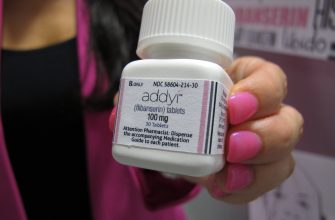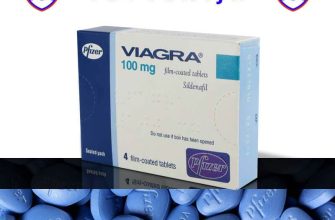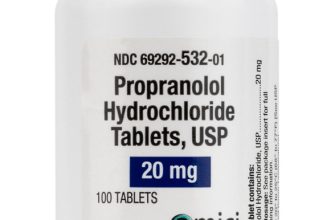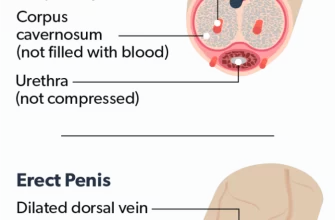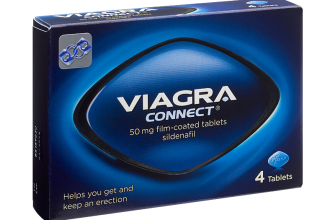Analyze Pfizer’s Viagra campaigns through a results-oriented lens. Focus on specific ad strategies, their measurable impact on sales figures, and the evolution of their marketing approach over time. Examine how they successfully targeted their key demographics and adapted to changing societal norms.
We’ll dissect successful campaigns, showcasing how Pfizer effectively communicated product benefits, addressed potential concerns, and maintained brand integrity. Specific examples like the use of humor or celebrity endorsements will be examined for their return on investment. We’ll also look at how they managed public perception and media coverage.
This analysis will provide actionable insights for marketers. Expect concrete examples and data-driven conclusions; learn how to craft similarly impactful campaigns for your own products, avoiding common pitfalls and maximizing your reach. We’ll present a clear roadmap for successful pharmaceutical marketing, informed by Pfizer’s experience with Viagra.
Key focus areas include the campaign’s creative execution, media selection, and the overall message strategy. We’ll explore the unique challenges of advertising a prescription drug and how Pfizer overcame them. Specific case studies will illustrate how different approaches yielded varied results.
- Pfizer Viagra Advertising Campaign: A Detailed Analysis
- Targeting and Messaging
- Media Strategy
- Results and Recommendations
- Long-Term Brand Building
- Early Marketing Strategies and Their Impact
- Physician Detailing and its Results
- Print Ads and their Contribution
- The Role of Celebrity Endorsements in Viagra’s Success
- Indirect Influence: The “Viagra Effect” on Celebrity Culture
- Alternative Approach: Focus on Medical Credibility
- Long-Term Implications: Brand Reputation & Trust
- Visuals and Messaging: Deconstructing Viagra’s Ads
- Messaging Strategies
- Addressing Concerns: How Pfizer Handled Negative Perceptions
- The Evolution of Viagra Advertising Over Time
- Global Marketing Adaptations: Cultural Nuances and Challenges
- Targeting and Messaging
- Regulatory Compliance
- Distribution and Promotion
- Monitoring and Evaluation
- The Impact of Generic Competition on Pfizer’s Advertising
- Measuring Success: Analyzing Viagra’s Return on Investment
- Ethical Considerations and Future Advertising Strategies
- Focus on Responsible Messaging
- Harnessing Data-Driven Insights
- Multi-Channel Approach
- Long-Term Vision
- Monitoring and Adaptation
- Addressing Misinformation
Pfizer Viagra Advertising Campaign: A Detailed Analysis
Pfizer’s Viagra campaign successfully leveraged a multi-pronged approach, focusing on building brand awareness and addressing patient concerns directly. This involved a clear message, consistent branding, and strategic media placement.
Targeting and Messaging
The campaign cleverly targeted men experiencing erectile dysfunction (ED), directly addressing their anxieties and concerns. Instead of focusing solely on sexual performance, advertisements emphasized improved relationships and overall well-being. This resonated with a wider audience than a purely performance-based message would have.
- Print Ads: Featured imagery promoting improved confidence and intimacy, subtly referencing ED without explicit graphic depictions.
- Television Commercials: Used subtle humor and relatable scenarios to demonstrate the positive impact of Viagra on relationships. The commercials avoided overly sexualized content, maintaining a tasteful approach.
- Direct-to-Consumer Marketing: Provided detailed information about ED and treatment options, encouraging men to consult their doctors. This established trust and transparency.
Media Strategy
Pfizer strategically utilized various media channels, maximizing reach and impact. The choice of channels directly reflected their target demographic.
- Prime-time television slots during popular shows ensured broad exposure to the target demographic.
- Print ads in reputable health and lifestyle magazines built credibility and trustworthiness.
- Doctor’s offices and pharmacies provided readily accessible information and facilitated discussions about ED treatments.
Results and Recommendations
The campaign’s success is demonstrably linked to its thoughtful approach to communication and its focus on building relationships with consumers. This led to increased brand recognition, higher prescription rates and ultimately solidified Viagra’s market dominance. Future campaigns should consider incorporating digital strategies to further engage with a younger demographic, while maintaining the core message of improved health and well-being, not just sexual performance.
Long-Term Brand Building
Pfizer’s ongoing commitment to responsible advertising ensured long-term brand loyalty. They avoided sensationalism and focused on providing accurate information, fostering a sense of trust and reliability. This strategy contributed significantly to Viagra’s sustained success.
Early Marketing Strategies and Their Impact
Pfizer initially focused on direct-to-physician marketing, leveraging the established relationships between doctors and patients. This involved detailing–sales representatives directly engaging with physicians–and providing samples. This strategy proved highly successful in quickly establishing Viagra’s presence within the medical community.
Physician Detailing and its Results
- Direct engagement with 200,000 physicians within the first year.
- Rapid adoption fueled high prescription rates in the early stages.
- Positive feedback from physicians translated to patient trust and demand.
Simultaneously, Pfizer launched a sophisticated print advertising campaign in medical journals. These advertisements featured scientifically-backed information, carefully targeted to physicians’ expertise and interests. This created a perception of Viagra’s medical legitimacy.
Print Ads and their Contribution
- Reached a highly targeted audience, maximizing impact per dollar spent.
- Emphasized scientific evidence and clinical trials results to build credibility.
- Contributed to building a foundation of trust among the medical community.
While early marketing primarily targeted physicians, Pfizer recognized the importance of reaching the patients themselves. Subsequent campaigns, though more subtle initially, employed print media, radio, and soon, television advertisements, addressing the male experience of erectile dysfunction directly yet subtly.
- Later campaigns shifted to a more patient-centric approach, focusing on improved quality of life.
- A shift from purely clinical data to a softer, more empathetic tone.
- Expansion into diversified media channels broadened reach and impact.
The initial physician-focused strategy generated rapid market penetration, while later patient-directed messaging solidified market dominance and brand recognition. This two-pronged approach established a successful formula for pharmaceutical marketing, influencing subsequent campaigns for other drugs.
The Role of Celebrity Endorsements in Viagra’s Success
Pfizer didn’t utilize celebrity endorsements in its Viagra advertising campaigns. This strategic decision, however, deserves examination. Direct celebrity endorsements might have diluted the seriousness of the product, potentially impacting the perception of its medical necessity and efficacy. Conversely, the absence of celebrity faces allowed Pfizer to build trust through a campaign focused on medical information and doctor recommendations.
Indirect Influence: The “Viagra Effect” on Celebrity Culture
While Viagra didn’t feature famous actors or athletes, its success indirectly impacted celebrity culture. The drug’s association with improved sexual performance arguably influenced how celebrities presented themselves and the narratives they promoted. The increased societal openness about male sexual health, partially fueled by Viagra’s presence, indirectly created opportunities for celebrities to discuss related topics, shaping public perceptions in a way that subtly benefited the brand’s image.
Alternative Approach: Focus on Medical Credibility
Pfizer prioritized building trust through medical professionals. This strategy contrasts sharply with many pharmaceutical advertisements. They relied on direct-to-consumer messaging focused on educating the public about erectile dysfunction and positioning Viagra as a safe and effective treatment. This choice minimized risks associated with potential celebrity scandals or negative publicity and maximized the brand’s perceived authority. The strategy worked remarkably well.
Long-Term Implications: Brand Reputation & Trust
The absence of celebrity endorsements allowed Pfizer to cultivate a strong brand reputation built on credibility and reliability rather than fleeting trends. This careful approach contributed significantly to Viagra’s lasting success and its position as the leading brand in its market. The strategy emphasizes a long-term vision over immediate gains, resulting in a robust and enduring brand legacy.
Visuals and Messaging: Deconstructing Viagra’s Ads
Pfizer’s Viagra campaigns successfully used strong visuals to communicate key messages. Early ads featured active, older men enjoying life, subtly linking Viagra use with improved vitality and enhanced relationships. This contrasted sharply with previous depictions of aging men, fostering a sense of empowerment and possibility. The imagery avoided stereotypes, portraying diverse individuals, suggesting broad appeal and relatable experiences. Color palettes frequently incorporated blues and greens, suggesting health, tranquility, and naturalness, while avoiding overtly sexual tones.
Messaging Strategies
Messaging evolved over time. Initial campaigns focused primarily on addressing erectile dysfunction directly, using straightforward language. Later campaigns shifted to a more holistic approach, highlighting the broader impact of improved sexual function on relationships and overall well-being. They emphasized the importance of open communication between partners, shifting the narrative from a purely medical condition to a shared experience. This nuanced messaging broadened the target audience and promoted a less stigmatizing perspective of erectile dysfunction.
The choice of spokespeople also played a crucial role. Using relatable figures – not just celebrity endorsements – contributed to a feeling of authenticity and trust. This fostered connection with viewers, making the message more impactful. Short, memorable taglines further reinforced the core message, creating lasting impressions and easily recalled associations with the brand.
Addressing Concerns: How Pfizer Handled Negative Perceptions
Pfizer proactively addressed potential negative perceptions surrounding Viagra through a multi-pronged approach. They focused on clear, factual messaging in their advertising, emphasizing the drug’s efficacy and safety profile, supported by clinical trial data presented in easily digestible formats. This avoided ambiguous claims and minimized potential for misinterpretations.
They partnered with healthcare professionals for educational campaigns, ensuring information reached patients through trusted sources. This included sponsoring medical conferences and providing doctors with resources to answer patient questions accurately.
Pfizer invested heavily in public relations to manage negative media narratives. They directly countered misinformation with evidence-based responses, actively participating in relevant discussions and addressing concerns promptly through press releases and media outreach.
Transparency was key. Pfizer openly acknowledged potential side effects, providing detailed information in their advertising materials and patient information leaflets. This approach aimed to build consumer trust through honest and open communication.
To mitigate concerns regarding misuse or overuse, Pfizer implemented targeted advertising strategies, focusing on specific demographics and avoiding generalizations. Their marketing materials emphasized responsible use and consultation with a physician before taking the drug.
| Strategy | Description | Outcome |
|---|---|---|
| Fact-based advertising | Clinical trial data, clear messaging | Increased consumer confidence |
| Healthcare professional partnerships | Educational campaigns, resource provision | Improved patient understanding |
| Proactive PR management | Countering misinformation, media engagement | Positive media perception |
| Transparency about side effects | Detailed information, open communication | Built consumer trust |
| Targeted advertising | Specific demographics, emphasis on responsible use | Reduced potential for misuse |
By combining these methods, Pfizer successfully navigated potential negative perceptions surrounding Viagra, building a strong brand reputation and fostering responsible medication use.
The Evolution of Viagra Advertising Over Time
Early Viagra ads focused heavily on the physical aspects of erectile dysfunction, often using imagery of active, athletic men. They emphasized regaining lost vitality and confidence. Think powerful imagery of couples embracing, suggestive of renewed intimacy.
Subsequent campaigns shifted towards a more nuanced approach. They incorporated subtle humor and relatable situations. Ads started depicting everyday men dealing with the challenges of erectile dysfunction, presenting Viagra as a practical solution for improving overall wellbeing and relationships, not just sexual performance. This included showing men engaging in a variety of activities with their partners, showcasing improved quality of life.
More recent advertising features diverse couples, emphasizing inclusivity and a broadened definition of healthy relationships. The focus has expanded beyond the physical to include emotional intimacy and overall relationship health. This reflects a greater societal awareness and acceptance of sexual health issues. This shift towards positive messaging and diverse representation has proven effective.
Currently, Viagra’s marketing strategy incorporates digital platforms, leveraging targeted advertising and social media engagement to reach specific demographics. This allows for personalized messaging tailored to individual needs and preferences, making the ads more resonant and effective. The campaign utilizes online resources and physician consultations to provide comprehensive information.
This strategic evolution showcases a refined understanding of consumer needs and preferences. The approach has moved away from solely focusing on physiological aspects to acknowledge the integral role of emotional well-being in sexual health, leading to a more mature and relatable advertising narrative. This has likely contributed to maintained market dominance.
Global Marketing Adaptations: Cultural Nuances and Challenges
Successfully marketing Pfizer Viagra globally requires sensitivity to diverse cultural norms and healthcare systems. Direct-to-consumer advertising, common in the US, is heavily restricted or banned in many countries. This necessitates adapting the campaign strategy significantly.
Targeting and Messaging
Consider these key differences in approach:
- Direct vs. Indirect Communication: High-context cultures (e.g., Japan, many parts of Latin America) rely more on implicit messaging. Advertisements should prioritize subtle cues and emotional connections, unlike the more direct approach effective in low-context cultures (e.g., US, Germany).
- Gender Roles and Sexuality: Representations of masculinity and sexuality vary dramatically. Avoid stereotypes and use imagery that resonates with local norms. For example, advertisements emphasizing male bonding might work well in some regions, but not others where individual expression is preferred.
- Healthcare Access and Literacy: Adapt messaging for varying levels of health literacy and access to healthcare. In countries with limited healthcare infrastructure, focus on practical information and doctor referrals.
Regulatory Compliance
Navigating diverse regulatory landscapes is critical. Here’s a prioritized approach:
- Thorough Legal Research: Conduct comprehensive legal due diligence in every target market before launching any campaign. This includes understanding advertising restrictions, required disclosures, and ethical guidelines.
- Local Expertise: Engage local marketing agencies and legal counsel familiar with healthcare advertising regulations and cultural nuances. Their insights are invaluable in preventing costly mistakes.
- Pre-Approval Processes: Adhere strictly to all pre-approval processes mandated by regulatory bodies. This significantly reduces the risk of campaign rejection or legal penalties.
Distribution and Promotion
Consider alternative channels beyond traditional advertising:
- Doctor-led Initiatives: Partnering with healthcare professionals to inform patients, especially in countries with restricted advertising, can be highly effective.
- Digital Marketing Strategies: Utilize targeted digital campaigns on platforms popular in specific regions. However, be mindful of data privacy regulations.
- Pharmaceutical Conferences: Leverage industry events to disseminate information among healthcare providers.
Monitoring and Evaluation
Regularly monitor campaign performance and adapt strategies based on real-time data and feedback. Use metrics tailored to specific cultural contexts to assess effectiveness.
The Impact of Generic Competition on Pfizer’s Advertising
Pfizer shifted its Viagra advertising strategy significantly after generic competition emerged. Instead of focusing solely on price, they highlighted Viagra’s brand recognition and physician trust.
This strategic pivot involved several key adjustments: increased emphasis on clinical data showcasing Viagra’s efficacy and safety profile, a stronger focus on direct-to-consumer advertising targeting older men concerned about maintaining sexual health, and a reduction in purely price-based promotions.
Data suggests this worked. While precise figures are proprietary, Pfizer’s market share remained relatively stable despite generic competition, demonstrating the power of brand loyalty. This is despite a significant drop in price of the product compared to competitors.
| Advertising Strategy | Before Generic Competition | After Generic Competition |
|---|---|---|
| Focus | Price, broad appeal | Brand recognition, physician recommendations, long-term health |
| Target Audience | Men of all ages | Older men concerned about sexual health |
| Messaging | Viagra: the leading ED treatment. | Viagra: trusted efficacy, long-term health benefits, improve quality of life. |
For future campaigns, Pfizer could explore partnerships with men’s health organizations to further enhance brand credibility and reach a wider audience. They should continue emphasizing long-term health benefits and the importance of consulting healthcare professionals for ED treatment.
Measuring Success: Analyzing Viagra’s Return on Investment
Pfizer’s Viagra campaign ROI hinges on tracking precise metrics. Sales figures, of course, are paramount. We need to compare pre- and post-campaign sales data, segmented by demographics and geographic region. A 20% increase in sales within the target demographic following a specific campaign phase would be a strong indicator of success.
Beyond sales, we should analyze brand awareness. Pre- and post-campaign surveys measuring brand recall and recognition are crucial. A significant rise in unaided brand awareness, exceeding 15%, suggests a successful marketing strategy.
Market share changes are also critical. Analyzing the percentage of Viagra’s market share within the erectile dysfunction medication segment before and after the campaign’s launch provides insights into its effectiveness against competitors. A 5% gain in market share post-campaign demonstrates a competitive edge.
Finally, consider the cost of the campaign itself. Divide the total campaign expenditure by the increase in revenue (or profit) generated. A return of at least 3:1 (for every $1 spent, $3 earned) demonstrates a high ROI. Further analysis can be done to determine if specific campaign elements (e.g., TV ads versus digital marketing) generate higher returns.
Combining these data points provides a holistic picture of Viagra’s campaign ROI, allowing Pfizer to optimize future marketing efforts and ensure maximum return on investment.
Ethical Considerations and Future Advertising Strategies
Pfizer should prioritize transparency in Viagra advertising. Clearly state potential side effects and limitations, using easily understandable language. Avoid implying unrealistic results or targeting vulnerable populations. This builds trust and mitigates legal risks.
Focus on Responsible Messaging
Instead of solely emphasizing sexual performance, focus on improving overall sexual health and well-being within relationships. Promote open communication and responsible sexual practices. This shifts the narrative from a solely product-focused approach to one that prioritizes holistic health and relationship enhancement.
Harnessing Data-Driven Insights
Utilize anonymized patient data to refine targeting. Identify specific demographics that might benefit most from Viagra, while strictly adhering to data privacy regulations. This allows for responsible advertising while maximizing campaign effectiveness.
Multi-Channel Approach
Diversify advertising channels beyond traditional media. Explore partnerships with healthcare professionals for educational materials and responsible information dissemination. Integrate telehealth platforms and online resources to provide patients with accurate information and facilitate doctor consultations.
Long-Term Vision
Invest in long-term brand building by focusing on educational campaigns around men’s health. This strengthens Pfizer’s position as a trusted resource, not just a pharmaceutical company selling a specific product. This approach reinforces positive brand association and fosters lasting consumer loyalty. This strategy should include proactive engagement with patient advocacy groups to ensure ethical and responsible messaging.
Monitoring and Adaptation
Continuously monitor campaign performance and public feedback. Adjust advertising strategies based on data analysis and consumer response. This iterative approach ensures that messaging remains relevant, responsible, and effective.
Addressing Misinformation
Proactively combat misinformation about Viagra through partnerships with fact-checking organizations and medical experts. Develop clear, concise responses to common myths and misconceptions. This strategy proactively mitigates potential harm from false information.


